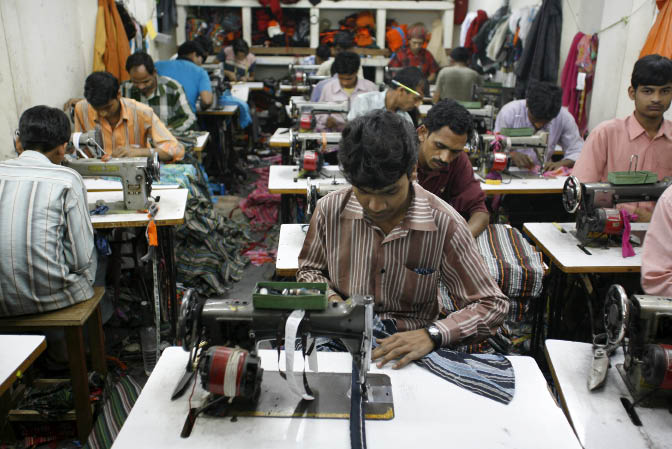Emerging economies worldwide are increasingly reaffirming the role of the manufacturing sector as an engine of their economic growth. In Asia, countries such as China, South Korea and Indonesia have formulated strategies to prioritize manufacturing. Manufacturing contributes 30 percent of China’s GDP. India hobbles behind in comparison with only 16 percent of its GDP coming from manufacturing. Aside from some notable exceptions in metal forging and steel production, Indian manufacturing has been lagging.
Although India witnessed a boom in the services sector in recent years, less than 25 percent of the country’s 1.2 billion population has the education and skill sets required for knowledge worker jobs. This renders manufacturing as the sector with the greatest potential to absorb the country’s unemployed labor force. The recent approval of the National Manufacturing Policy by India’s Cabinet is a much-needed impetus for the country’s manufacturing sector.
Objectives and Strategies
The National Manufacturing Policy, formulated by India’s Department of Industrial Policy and Promotion (DIPP), which is part of the federal Ministry of Commerce and Industry, targets increasing the share of the manufacturing sector in India’s GDP to 22 percent by 2022. It aims to create 100 million new jobs in the sector within a decade, ensure inclusive and sustainable growth, and transform India into a globally competitive manufacturing hub. The policy proposes the following initiatives for propelling growth in the manufacturing sector:
• Setting up National Manufacturing and Investment Zones (NIMZ). The first NIMZ is to be located in the Delhi-Mumbai Industrial Corridor.
• Focusing on priority sectors, such as employment-intensive, strategic and capital goods industries. Target sectors include textiles, leather, gems and jewelry, food processing, heavy electric, telecom, power, IT, aerospace and pharmaceuticals.
• Promoting “green” technology and initiating international partnerships.
• Ensuring investor-friendly business environment by simplifying and rationalizing regulations.
• Creating “Special Purpose Vehicles” (SPVs) to manage the NIMZs and to be responsible for technical capacity building of workers.
• Revising duty structures and reducing border taxes to boost manufacturing and encourage exports.
• Promoting domestic manufacturing capabilities by consolidating government procurement needs to generate volumes.
Challenges
While the National Manufacturing Policy has set ambitious targets based on a long-term vision for India’s economy, it faces several challenges.
Traditionally, some of the big barriers to economic growth in India have been red tape and corruption. In addition, for the NIMZs, the authorities will need to surmount issues such as limited availability of suitable land and potential regulatory barriers. Finally, the government must address a question that begs to be asked — will increasing the share of manufacturing in the GDP, on its own steam, drive economic growth. An appropriate strategy would be to complement industrial development with skill creation and capacity building. Ventures such as the National Skill Development Corporation, a government venture to develop skills through vocational training, can play a pivotal role in steering this strategy.
The experience of nations that have initiated rapid industrialization in recent years reveals that the first step is a conscious policy effort. From that perspective, the National Manufacturing Policy is a step in the right direction. Its results will depend largely on the extent to which the government succeeds in integrating it into the larger framework of socio-economic development.
Gunjan Bagla is author of Doing Business in 21st Century India.

